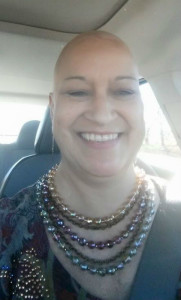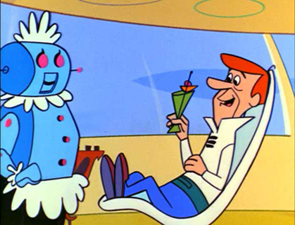Yesterday in our Social Media Class, we had a student presenter Khaled share with us Sherry Turkle’s TED Talk on being Connected But Alone. I had read her book Alone Together, but had not yet viewed the TED talk in its entirety. If you aren’t familiar with her work, and are concerned about how technology is changing us, you don’t want to miss it:
After viewing the video, we had a good discussion in class about several of Turkle’s key ideas. This was one:
We’re letting technology take us places we don’t want to go
How is technology changing us, and are we even conscious about it? Are we losing our ability to connect with one another in real life? Are we never truly present to one another in our state of constant electronic distraction?
I was reminded of something Brené Brown wrote some time ago that struck a nerve with me back then: They don’t need us to be sorry, just present. Brown, at the time, was experiencing a meteoric rise in recognition, from giving her own TED talks to appearing on Oprah, and I’m sure things in her house were thrilling but chaotic.
I could totally relate when Brené wrote:
I don’t want my kids to feel like they’re competing with my computer for my time or attention. I’ll NEVER forget when Charlie was about 2 years old and he said, “You play with Chawlie or you play with com-poo-der?” Crushing.
But also this:
I do want to model the importance of hard work and persistence. These are two of my core beliefs and also my strengths – I want to hand them down. In my work I see how privilege and entitlement eventually crush a child’s self-worth. I don’t want my kids to be afraid of disappointment and work. My work is demanding and I want to model rising to the challenge.
All too often, I am guilty of giving only cursory attention to those around me. Family, friends, colleagues, students, everyone really. Like Brené, I am insanely busy at this point in my life. This should change somewhat after I finish my Ph.D. but right now there simply aren’t enough hours in the day.
Yet Brené offers some solid advice towards moving in a positive direction addressing Sherry Turkle’s concerns about how we use technology.
I’m employing the Nordstrom method of engaging. The salespeople at Nordstrom always walk around to the front of the register table to hand you your bag. They never reach over the counter. I’m trying to do the same thing. I’m trying to never talk to my kids over the top of my laptop or while I’m staring at the screen.
Have you ever been on the receiving end of that? Someone giving you half (or less) of their attention while peering over the top of a computer monitor? It is unsettling, even insulting. Like Brené’s little Charlie, it feels like they love the computer more. When I remember the feeling, it is a lot easier to be mindful of when I’m doing it to others as well.
As a college professor I see many young students who struggle to connect – to look people in the eye, to carry on a conversation without checking their phones, to walk across campus without talking, texting or listening to music. It’s a problem.
Ask anyone working with young adults, they will agree. Heck, this often comes up in our class discussions. As Sherry Turkle reminds us, we are letting technology take us places we don’t want to go, but it doesn’t have to be so. We just need to be a little more aware of what is happening, and then put our foot down when we don’t like how things are. Like taking time to look people in the eye, to have actual, attentive conversations with one another. To respect and to value one another.
But it doesn’t come automatically. As Sherry Turkle says in her TED talk, technology plays to our weaknesses. It is always easier to send a text than to look someone in the eye. When you have a live, face to face conversation you cannot edit and perfect your words. You are there, warts and all; you are vulnerable. But that is part of being human, and part of being alive. Those who start to figure this out and make conscious choices in how they conduct their lives with regards to technology will be living as the best version of themselves.











